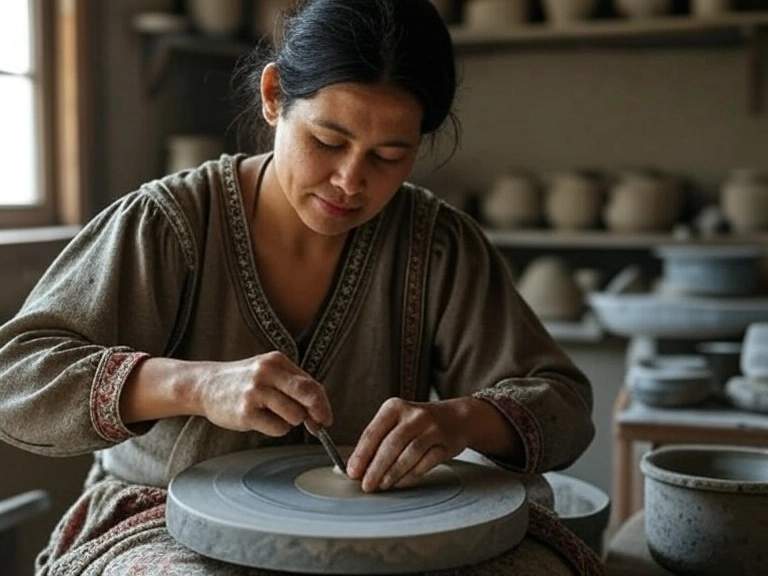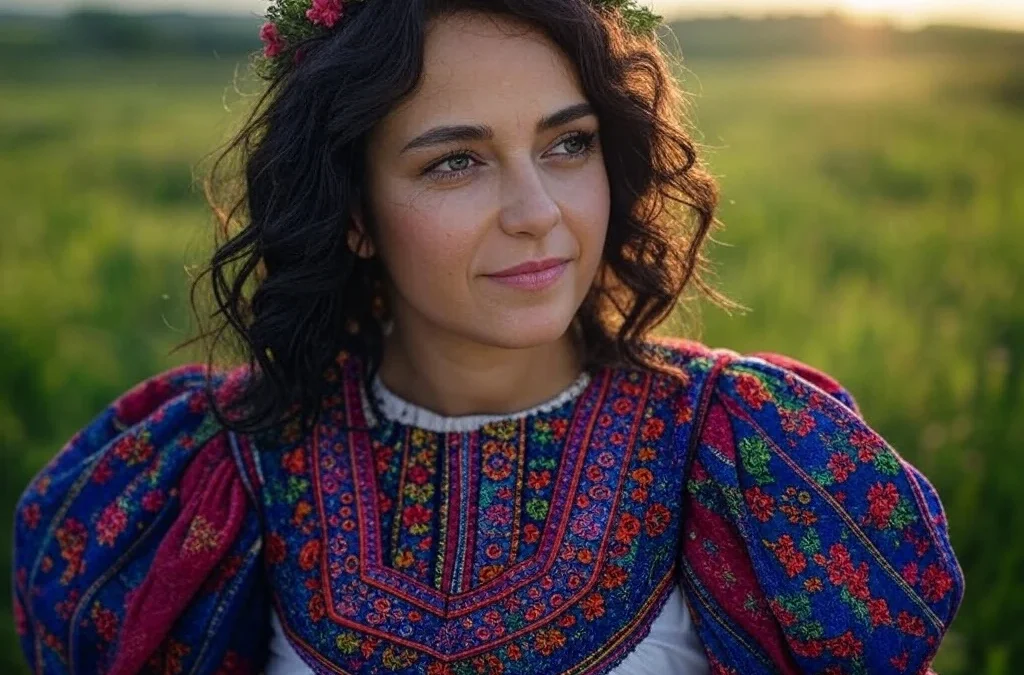Folklore connects people through shared stories, beliefs, and traditions. In this article, you will find over 100 folklore examples from every corner of the globe, explained to help you understand their meaning and cultural importance.
What Is Folklore?
Folklore is the collective body of traditional stories, beliefs, customs, songs, dances, proverbs, crafts, and rituals that a community creates, preserves, and passes down—primarily through oral tradition and practice—across generations. Emerging from everyday life rather than formal institutions, folklore captures a culture’s values, fears, humor, and history in forms such as myths, legends, fairy tales, folk music, festival rites, and regional crafts. Because it is transmitted person to person, folklore continually evolves, adapting to new social contexts while retaining recognizable core motifs and symbols. In essence, folklore is a living archive of a people’s intangible cultural heritage, offering insight into how communities understand the world, reinforce identity, and connect past with present.
Folklore Examples
1. The Loch Ness Monster (Scotland)
A mysterious aquatic creature said to inhabit Loch Ness, sparking worldwide fascination and countless expeditions.
2. Baba Yaga (Poland)
A fearsome witch living in a hut standing on chicken legs, often portrayed both as a villain and a helper in Slavic fairy tales.
3. El Chupacabra (Latin America)
A terrifying creature rumored to suck the blood of livestock, particularly goats, causing fear among rural communities.
4. Anansi the Spider (West Africa)
A clever and mischievous spider who uses his wit to outsmart others, embodying the spirit of storytelling.
5. Bigfoot (United States)
An elusive, ape-like being said to roam the forests of the Pacific Northwest, leaving behind large footprints.
6. The Banshee (Ireland)
A ghostly woman whose wailing signals the impending death of a family member in Irish legend.
7. Tengu (Japan)
Supernatural beings with human and bird-like features, often seen as protectors of mountains and forests.
8. The Minotaur (Ancient Greece)
A monstrous creature with the body of a man and the head of a bull, confined to a labyrinth by King Minos.
9. The Yeti (Himalayas)
Also known as the Abominable Snowman, a large, shaggy humanoid believed to live in the snowy peaks.
10. Puss in Boots (Europe)
A cunning cat who uses trickery and charm to secure wealth and status for his penniless master.
11. La Llorona (Mexico)
The “Weeping Woman” spirit who roams rivers and lakes, mourning her lost children whom she drowned in a fit of rage.
12. Kelpies (Scotland)
Shape-shifting water spirits that lure humans into rivers or lochs to drown them.
13. Coyote the Trickster (Native American)
A clever, mischievous figure who often bends rules, teaches lessons, and sometimes causes chaos.
14. The Phoenix (Ancient Egypt & Greece)
A majestic bird that cyclically dies in flames and is reborn from its own ashes, symbolizing renewal.
15. The Pied Piper of Hamelin (Germany)
A mysterious piper who led away the town’s children as punishment after the townspeople refused to pay him for removing a rat infestation.
16. Krampus (Austria)
A horned, menacing figure who punishes naughty children during the Christmas season.
17. The Wendigo (Algonquian folklore)
A terrifying spirit associated with cannibalism and insatiable hunger in winter landscapes.
18. The Green Man (Britain)
A symbol of rebirth and the cycle of growth each spring, usually depicted as a face surrounded by leaves.
19. The Flying Dutchman (Maritime legend)
A ghost ship doomed to sail the oceans forever, bringing bad luck to those who spot it.
20. The Brownie (Scotland)
A small household spirit that secretly helps with chores if treated well, but leaves if insulted.
21. Valkyries (Norse Mythology)
Warrior maidens who choose slain heroes to bring to Valhalla.
22. The Golem (Jewish folklore)
A clay figure brought to life through mystical means to protect the Jewish community of Prague.
23. The Rainbow Serpent (Aboriginal Australia)
A creator deity who shapes the land and controls water, revered across many Aboriginal cultures.
24. The Roc (Middle Eastern folklore)
An enormous bird capable of carrying off elephants, featured in One Thousand and One Nights.
25. The Headless Horseman (United States)
A ghostly rider searching for his lost head, popularized by Washington Irving’s The Legend of Sleepy Hollow.
26. The Nian (China)
A mythical beast that terrorizes villages at Lunar New Year, warded off by loud noises and red decorations.
27. Jack and the Beanstalk (England)
A young boy climbs a giant beanstalk to steal treasures from a fearsome giant.
28. The Thunderbird (Native American)
A powerful bird that controls the weather, known to bring storms with the flap of its wings.
29. Selkies (Scotland/Ireland)
Beings that live as seals in the sea but can shed their skins to become human on land.
30. Kitsune (Japan)
Intelligent foxes with magical abilities, often portrayed as guardians, lovers, or tricksters.
31. The Troll (Scandinavia)
Large, slow-witted creatures living under bridges or in caves, feared and avoided by villagers.
32. The Tooth Fairy (Western folklore)
A benevolent figure who leaves money under a child’s pillow in exchange for a lost tooth.
33. The Basilisk (Medieval Europe)
A serpent or lizard whose gaze or breath causes instant death.
34. The Lady of the Lake (Arthurian legend)
A mystical woman who bestows King Arthur with the sword Excalibur.
35. Tanuki (Japan)
Raccoon dogs known for their shape-shifting abilities and playful nature.
36. The Cyclops (Ancient Greece)
A giant with a single eye in the center of its forehead, famous in Homer’s Odyssey.
37. The Dullahan (Ireland)
A headless rider who carries his own head and foretells death.
38. The Djinn (Middle Eastern folklore)
Powerful spirits that can grant wishes but are often unpredictable or dangerous.
39. The Will-o’-the-Wisp (Europe)
Mysterious lights leading travelers off safe paths into dangerous swamps or bogs.
40. The Leprechaun (Ireland)
A small, elusive shoemaker who hides his pot of gold at the end of the rainbow.
41. The White Lady (various cultures)
A ghostly apparition of a woman in white, usually mourning lost love or betrayal.
42. The Tarasque (France)
A fearsome dragon-like beast subdued by Saint Martha with prayers and kindness.
43. The Boogeyman (various cultures)
A creature used by adults to scare children into good behavior, often lurking in closets or under beds.
44. The Fenrir Wolf (Norse Mythology)
A monstrous wolf prophesied to kill Odin during Ragnarök.
45. The Nuckelavee (Orkney Islands)
A terrifying horse-like demon with no skin, exhaling toxic breath over crops and livestock.
46. The Mermaid (various cultures)
A half-human, half-fish creature whose songs lure sailors to their doom or warn of impending storms.
47. The Baba (Ukraine)
An old crone figure whose knowledge and powers can either help or hinder those who seek her.
48. The Púca (Ireland)
A shape-shifting creature known for its wild pranks and unsettling appearances.
49. The Kobold (Germany)
A small household or mine spirit, helpful when respected but malicious when offended.
50. The Jiangshi (China)
A “hopping vampire” that drains the life force from living beings.
51. The Huldra (Scandinavia)
A forest spirit resembling a beautiful woman from the front but with a hollow or tail at the back.
52. The Cockatrice (Medieval Europe)
A two-legged dragon or serpent with the deadly power to turn people to stone with its glare.
53. The Chimera (Ancient Greece)
A fire-breathing beast with the head of a lion, body of a goat, and tail of a serpent.
54. The Kraken (Scandinavia)
A monstrous sea creature said to drag entire ships and crews beneath the waves.
55. The Manticore (Persian folklore)
A fearsome hybrid with the body of a lion, a human head, and a venomous tail.
56. The Black Shuck (England)
A ghostly black dog with fiery eyes said to haunt coastal paths and countryside lanes.
57. The Encantado (Brazil)
River dolphins that transform into humans to seduce and kidnap people.
58. The Spriggan (Cornwall)
Tiny but malevolent fae known for guarding treasures and punishing intruders.
59. The Tikbalang (Philippines)
A tall, horse-headed creature that leads travelers astray in forests and mountains.
60. The Strzyga (Poland)
A vampiric creature believed to be a restless soul returning from the dead to prey on the living.
61. The Myling (Scandinavia)
The ghost of an unbaptized child that attaches itself to travelers, seeking proper burial.
62. The Gwyllgi (Wales)
A ghostly black dog that prowls lonely roads and frightens night travelers.
63. The Grootslang (South Africa)
A primordial monster said to dwell in deep caves, combining the features of an elephant and a serpent.
64. The Bunyip (Australia)
A mysterious water-dwelling beast said to lurk in swamps, creeks, and billabongs.
65. The Leshy (Slavic folklore)
A woodland spirit who protects animals and plants, sometimes leading humans astray.
66. The Zhar-Ptitsa (Russia)
A magnificent firebird whose glowing feathers are both a blessing and a burden for those who find them.
67. The Mooin (Algonquin folklore)
The bear spirit revered for its strength, wisdom, and importance in survival tales.
68. The Alux (Mayan folklore)
Small, elf-like beings that protect the land and crops if given proper offerings.
69. The Aswang (Philippines)
A horrifying shape-shifter that preys on humans, particularly pregnant women.
70. The Penanggalan (Malay folklore)
A nightmarish vampire whose head detaches from its body, trailing internal organs to hunt for victims.
71. Chinese Dragon (China)
Benevolent, weather-controlling serpents symbolising imperial power, luck, and rainfall.
72. Qilin (China)
A gentle, hoofed chimera whose appearance heralds the birth or death of a sage ruler.
73. Sun Wukong, the Monkey King (China)
A rebellious, shape-shifting trickster-hero wielding a magic staff in Journey to the West.
74. Naga (South & Southeast Asia)
Semi-divine serpent beings who guard treasures and rivers, sometimes marrying humans.
75. Rakshasa (India)
Powerful, man-eating demons and sorcerers who battle heroes in Hindu epics.
76. Vetala (India)
Undead spirits that possess corpses and challenge mortals with riddles and moral tests.
77. Garuda (Hindu-Buddhist world)
Gigantic eagle-man who devours snakes and serves as the mount of the god Vishnu.
78. Oni (Japan)
Horned ogres brandishing iron clubs, punishing the wicked during Setsubun.
79. Kappa (Japan)
River goblins who drown unsuspecting swimmers—placated with polite bows or cucumbers.
80. Skinwalker (Navajo, USA)
A malevolent witch who can transform into animals to sow illness or fear.
81. Piasa Bird (Illini people, USA)
Man-eating winged monster once painted on Mississippi River bluffs.
82. Ciguapa (Dominican Republic)
Wild mountain spirit with backward feet who lures travelers into the night.
83. Saci-Pererê (Brazil)
One-legged whirlwind trickster in a red cap who steals or befuddles belongings.
84. Tikoloshe (Zulu, South Africa)
Invisible dwarf water-spirit blamed for misfortune, nightmares, and sudden illness.
85. Adze (Ewe, Ghana-Togo)
Vampiric insect-spirit that drinks blood and causes wasting diseases.
86. Mami Wata (West & Central Africa)
Alluring water deity who brings wealth or disaster to devotees.
87. Yara-ma-yha-who (Aboriginal Australia)
Small red vampire that swallows victims whole, then spits them out as its kin.
88. Māui (Polynesia)
Culture hero who fished islands from the sea and snared the sun to lengthen days.
89. Taniwha (Māori, New Zealand)
Powerful water-dragons that guard or menace waka (canoes) and river mouths.
90. Moʻo (Hawaiʻi)
Giant lizard spirits protecting freshwater pools and female chiefs.
91. Domovoi (Slavic Europe)
Bearded house spirit who keeps hearth and livestock safe if treated with respect.
92. Rusalka (Slavic Europe)
Water nymphs—sometimes drowned maidens—who lure the unwary beneath the surface.
93. Koschei the Deathless (Russia)
Immortal villain who hides his soul inside nested objects to avoid death.
94. Erlking (Germanic)
Spectral forest king who calls children to their doom with hypnotic song.
95. Perchta (Alpine Europe)
Winter witch who rewards the diligent and disembowels the lazy during Twelfth Night.
96. Wild Hunt (Northern Europe)
Raging night procession of phantom riders and hounds foretelling war or plague.
97. Draugr (Norse)
Restless, treasure-hoarding undead warriors haunting burial mounds.
98. Jörmungandr (Norse)
World-serpent encircling Midgard, fated to fight Thor at Ragnarök.
99. Níðhöggr (Norse)
Dragon gnawing the roots of Yggdrasil while feasting on the corpses of oath-breakers.
100. Chaneque (Veracruz, Mexico)
Tiny forest sprites who frighten travelers and hide their souls or possessions.
Types of Folklore
Folklore comes in many forms. Some tell of heroes and monsters. Others pass on lessons or explain strange events. Together, these types show the richness of human culture and imagination.
1. Myths
Myths are some of the oldest forms of folklore. They often explain the origins of the world, the gods, and nature. Myths answer big questions: Where did we come from? Why do seasons change? Cultures around the world have myths. Greek, Norse, Egyptian, and Hindu myths are well known. They tell of powerful gods, brave humans, and strange creatures. Myths teach values and give people a sense of meaning.
2. Legends
Legends are based on real people or events, but they are often told with added mystery. They may start with truth but grow into larger-than-life tales. Stories of King Arthur, Robin Hood, and El Cid are legends. Local legends still thrive in towns and regions across the world. They help build community pride and identity.
3. Folktales
Folktales are stories passed down by word of mouth. They include fairy tales, animal stories, and trickster tales. Characters are often common people, animals, or magical beings. Famous examples include “Cinderella,” “The Boy Who Cried Wolf,” and “Puss in Boots.” Folktales entertain, but they also teach lessons about honesty, kindness, and hard work.
4. Fables
Fables are short stories that teach a moral. Animals are often the main characters. Aesop’s fables from ancient Greece are the best known. Stories like “The Tortoise and the Hare” or “The Fox and the Grapes” are still told to children today. The lessons are simple, clear, and easy to remember.
5. Fairy Tales
Fairy tales are magical stories where good usually wins over evil. They include witches, giants, talking animals, and enchanted objects. Classic fairy tales like “Snow White” and “Sleeping Beauty” have been passed down for centuries. Many versions exist across different cultures. Fairy tales give hope and warn of dangers in life.
6. Proverbs and Sayings
Proverbs are short, wise sayings passed from generation to generation. They offer advice or express truths. Phrases like “A stitch in time saves nine” or “Better late than never” are common examples. Proverbs reflect the values and beliefs of the people who use them.
7. Folk Music and Dance
Folk music and dance are powerful forms of expression. They bring people together at festivals, weddings, and gatherings. Each culture has its own styles and rhythms. Folk songs tell stories of love, struggle, and celebration. Dances often carry deep cultural meanings and rituals.
8. Rituals and Customs
Every culture has rituals and customs tied to life’s important events. Birth, marriage, and death ceremonies often include traditional practices. Seasonal festivals, coming-of-age ceremonies, and religious observances also fall under this type of folklore. These traditions help people mark time and feel part of a larger community.
9. Superstitions
Superstitions are beliefs in signs, omens, or magical influences. They are passed down through generations. People avoid walking under ladders, breaking mirrors, or opening umbrellas indoors. Even today, many follow these customs without knowing their origin. Superstitions show the human need to feel safe in an uncertain world.
10. Urban Legends
Urban legends are modern folklore. These stories spread quickly and often sound believable. They involve mysterious happenings, strange creatures, or unexplained events. Tales of haunted houses, vanishing hitchhikers, or secret experiments are common examples. Though often false, urban legends reflect modern fears and curiosities.
Folklore is everywhere. It lives in stories we tell, songs we sing, and traditions we keep. These types of folklore remind us of the power of storytelling. They link the past with the present and keep cultures alive. From ancient myths to new urban legends, folklore continues to shape our lives every day.
Rituals and Customs in Folklore
Rituals and customs are an essential part of folklore. They are the repeated actions, ceremonies, and traditions that communities use to mark important moments in life. These can include births, weddings, harvests, religious celebrations, and funerals. Some rituals are grand and public. Others are simple and private.
Many rituals have been passed down for hundreds or even thousands of years. Families and communities use them to celebrate, mourn, and unite. A wedding ceremony, for example, is not just about the couple. It connects two families and honors shared cultural traditions.
Across the world, customs vary greatly. In some places, people light candles to remember loved ones. In others, villagers may wear special costumes and masks to ward off evil spirits. Ritual dances, songs, and prayers often play a central role. These customs give people a sense of belonging. They offer comfort in times of change.
Folklore rituals can also mark the changing seasons. Harvest festivals, spring celebrations, and winter solstice ceremonies remind people of nature’s cycles. In many cultures, these events are filled with music, storytelling, and food. They bring people together.
Even small daily habits can be seen as customs shaped by folklore. Knocking on wood to avoid bad luck, tossing salt over the shoulder, or carrying lucky charms are examples. They may seem simple, but they show how deeply folklore influences everyday life.
Rituals and customs are living traditions. They connect the past with the present. They remind people of who they are and where they come from. Through folklore, these traditions continue to be shared, respected, and celebrated around the world.
Worldwide Rituals and Customs Examples
The Japanese Tea Ceremony (Japan)
A traditional, highly detailed ritual of preparing and drinking matcha tea, symbolizing harmony, respect, and purity.
Dia de los Muertos (Mexico)
The Day of the Dead celebration where families honor deceased loved ones with altars, flowers, and food offerings.
Burning of the Guy on Bonfire Night (United Kingdom)
Every November 5th, effigies of Guy Fawkes are burned on bonfires to mark the failed Gunpowder Plot of 1605.
Hanami (Japan)
The custom of gathering under cherry blossom trees in spring to appreciate their fleeting beauty.
Carnival in Rio de Janeiro (Brazil)
A world-famous pre-Lenten festival featuring parades, elaborate costumes, music, and street dancing.
Thanksgiving (United States)
An annual holiday where families gather to share a meal and give thanks for the harvest and blessings of the past year.
Holi (India)
The Festival of Colors, where people joyfully throw colored powders and water to celebrate the arrival of spring and the victory of good over evil.
Oktoberfest (Germany)
A massive folk festival held in Munich, known for traditional Bavarian music, food, and beer.
Highland Games (Scotland)
Traditional Scottish events combining athletic competitions like caber tossing with cultural displays of music and dance.
Chinese New Year (China and worldwide Chinese communities)
Celebrated with dragon dances, fireworks, red decorations, and family reunions to welcome the new year and drive away evil spirits.
Read also
The Most Popular on BitGlint

Top 100 Personal Items List
Everyone uses personal items in their daily lives, often without even thinking about them. From the moment you wake up...

30 Vice Versa Examples & Meaning
The phrase vice versa is short, but it carries a lot of meaning. You’ve probably heard it in daily conversations, read...

Top 30 Desire Examples & Definition
Desire is a powerful force that drives much of human behavior, shaping our goals, dreams, and everyday decisions. It's...

100 Non-Digital Things List
In everyday life, there are still hundreds of objects, tools, and materials that exist completely outside the digital...

30 Examples of Attention & Definition
Have you ever noticed how a catchy tune can grab your attention, even when you're busy doing something else? It's...

60 Cultural Traditions Examples & Definition
Cultural traditions are part of daily life - whether people realize it or not. They shape what we eat, how we...

Top 30 Intimacy Examples & Meaning
Intimacy goes beyond physical touch or romantic moments. It’s about closeness, trust, and connection. In everyday...
Get Inspired with BitGlint
The Latest
40 Emotional Value Examples & Meaning
Why do some messages stick — while others are forgotten? Why do people choose one brand over another, even when the product is the same? The answer often comes down to emotional value. Emotional value is what makes a message feel human. It’s the emotional connection...

30 Teasing Examples & Definition
Teasing is a common part of human interaction. People tease in different ways, for different reasons. Sometimes it is friendly. Sometimes it can hurt feelings. Understanding what teasing means and seeing clear examples helps everyone handle these moments better....
40 Thought Experiments for Curious Minds
Some questions can’t be answered with a simple yes or no. Some problems don’t have a clear solution. That’s where thought experiments come in. They aren’t just old ideas from philosophy books. Thought experiments are tools we still use to think through problems, test...
20 Emo Subculture Examples: Definition & Style
Imagine walking into a room filled with black band tees, skinny jeans, and hair that often covers one eye. You might have stumbled into a gathering of the emo subculture, a community known for its distinct fashion, music preferences, and emotional expression. The emo...

